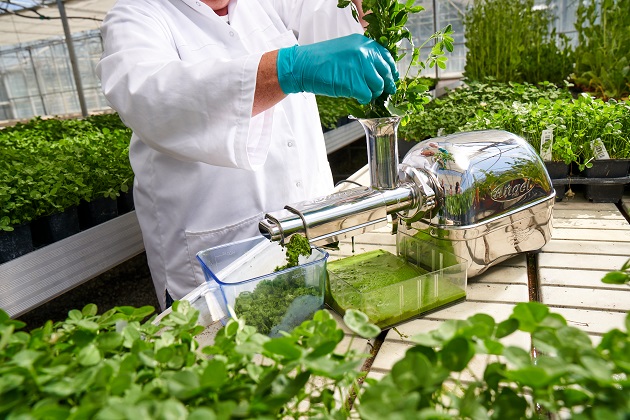Grass proteins – the sustainable nutrition of the future?
Grasses are amazing crops! They are perennial plants, and when they stand in the field, they absorb CO2 from the air, which is converted and used to form leaves and roots. Over time, they can store a lot of carbon in the soil. They are also some of the best crops for utilizing nitrogen, so their impact on the environment and climate is really minimal. Wish we all could thrive on grass. We can't... yet!

But we may soon be able to eat proteins extracted from grass. Today, we can already use proteins from grass to feed chickens and pigs instead of imported soy. In Denmark, there are two refineries, which convert tons of fresh grass into dried protein powder every year.
In a project called 'GræsProf', DLF and researchers from Aarhus University have for three years studied more than hundred different varieties of grass, clover, and alfalfa for the amount of extractable protein. We have also investigated whether the protein content is the same throughout the growing season and whether it is affected by wind and weather.
We have used the results to make grass-clover mixtures that have the greatest protein content and at the same time are well adapted to the soils and weather conditions around the biorefineries. One of the factors that has a major influence on protein extraction is drought. The experiments have shown that when grasses experience drought, they fortify their cell walls and the proteins are bound more firmly to the fibers. This is a very important knowledge, which means that the farmer must remember to turn on irrigation in the absence of rain.
However, clover and alfalfa, which are included in the grass mixtures, are not as sensitive to drought when it comes to protein extraction. Therefore, it is also important that the farmer maintains a good balance between these legumes and the grass in the field. Fortunately, many farmers are very good at this. So who knows – maybe we'll eat foods filled with climate-friendly grass proteins before we know it!
The Foundation for Green Development Projects and Demonstration Experiments (GUDP) has provided financial support for the project.
